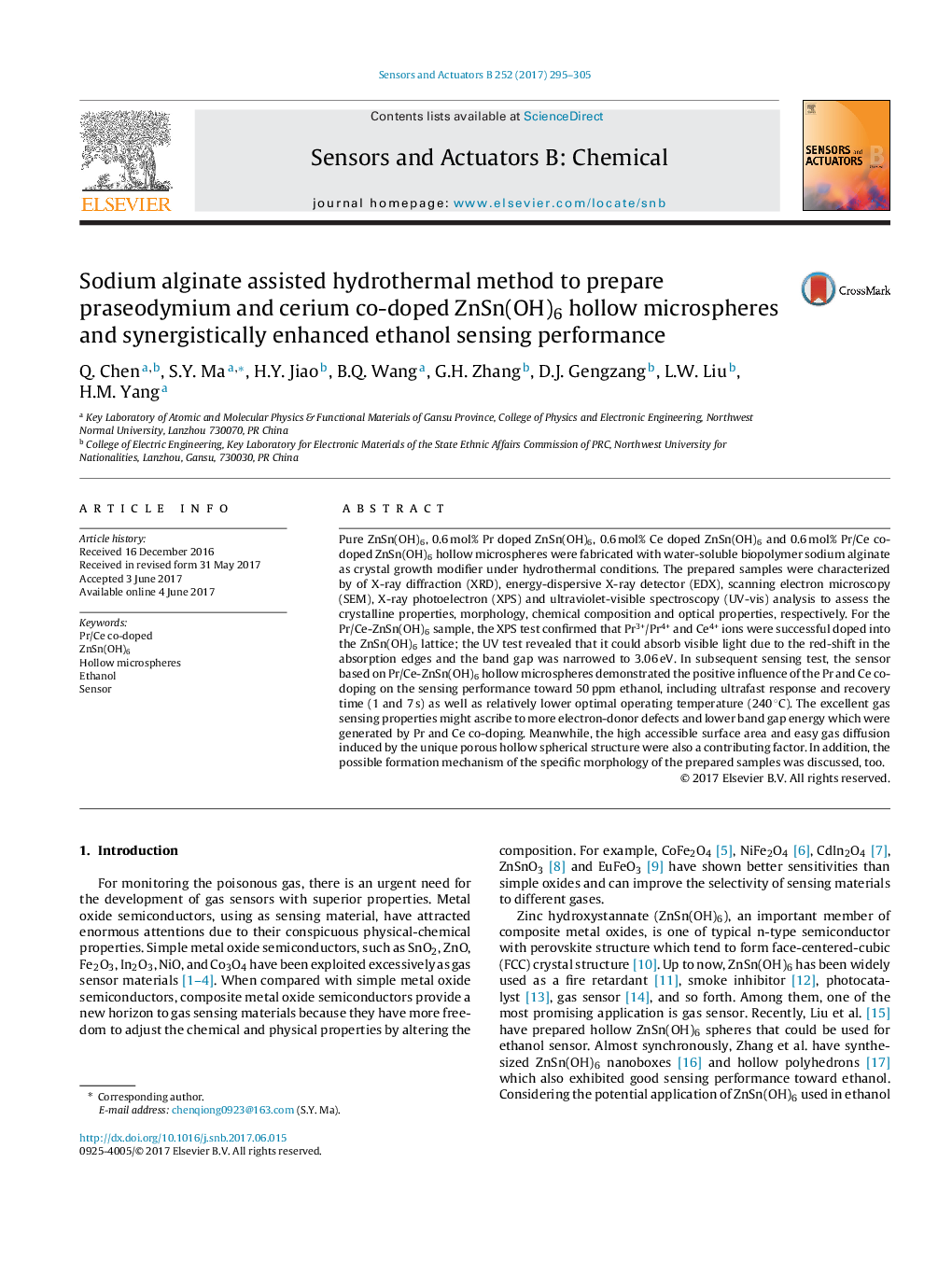| کد مقاله | کد نشریه | سال انتشار | مقاله انگلیسی | نسخه تمام متن |
|---|---|---|---|---|
| 5009078 | 1462039 | 2017 | 11 صفحه PDF | دانلود رایگان |

- The Pr/Ce co-doped ZnSn(OH)6 porous hollow microspheres are fabricated by a typical bioploymer-sodium alginate under hydrothermal conditions.
- Aliovalent co-doped with Pr3+/Pr4+and Ce4+ can reduce band gap energy of ZnSn(OH)6 hollow microspheres and induce more electron-donor defects.
- The Pr/Ce co-doped ZnSn(OH)6 microspheres present superior sensing performance to 50 ppm ethanol at 240 °C, and possess ultrafast response and recovery time (1 and 7 s).
Pure ZnSn(OH)6, 0.6 mol% Pr doped ZnSn(OH)6, 0.6 mol% Ce doped ZnSn(OH)6 and 0.6 mol% Pr/Ce co-doped ZnSn(OH)6 hollow microspheres were fabricated with water-soluble biopolymer sodium alginate as crystal growth modifier under hydrothermal conditions. The prepared samples were characterized by of X-ray diffraction (XRD), energy-dispersive X-ray detector (EDX), scanning electron microscopy (SEM), X-ray photoelectron (XPS) and ultraviolet-visible spectroscopy (UV-vis) analysis to assess the crystalline properties, morphology, chemical composition and optical properties, respectively. For the Pr/Ce-ZnSn(OH)6 sample, the XPS test confirmed that Pr3+/Pr4+ and Ce4+ ions were successful doped into the ZnSn(OH)6 lattice; the UV test revealed that it could absorb visible light due to the red-shift in the absorption edges and the band gap was narrowed to 3.06 eV. In subsequent sensing test, the sensor based on Pr/Ce-ZnSn(OH)6 hollow microspheres demonstrated the positive influence of the Pr and Ce co-doping on the sensing performance toward 50 ppm ethanol, including ultrafast response and recovery time (1 and 7 s) as well as relatively lower optimal operating temperature (240 °C). The excellent gas sensing properties might ascribe to more electron-donor defects and lower band gap energy which were generated by Pr and Ce co-doping. Meanwhile, the high accessible surface area and easy gas diffusion induced by the unique porous hollow spherical structure were also a contributing factor. In addition, the possible formation mechanism of the specific morphology of the prepared samples was discussed, too.
Journal: Sensors and Actuators B: Chemical - Volume 252, November 2017, Pages 295-305